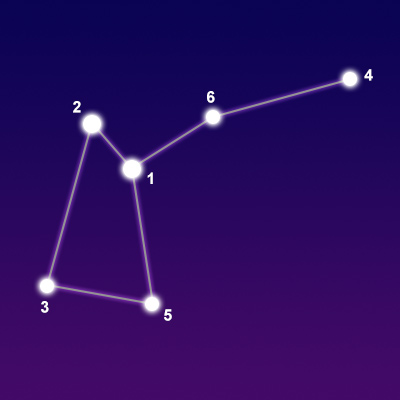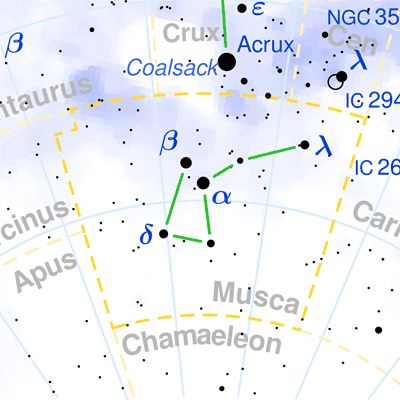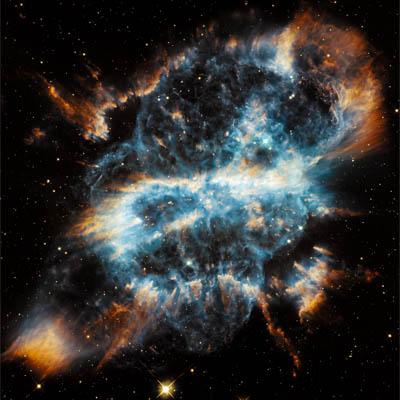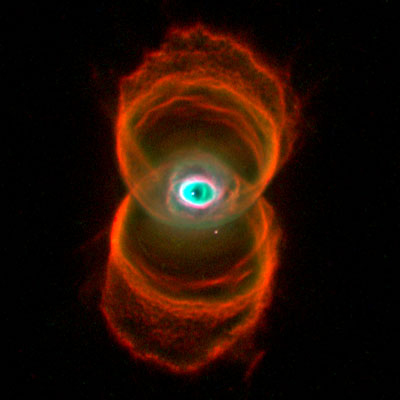Pronunciation:
(MUS-kuh)Abbreviation:
MusGenitive:
MuscaeRight Ascension:
12 hoursDeclination:
-70 degreesArea in Square Degrees:
138Crosses Meridian:
9 PM, May 10Visible Between Latitudes:
10 and -90 degreesThe constellation Musca, the fly, is located in the southern hemisphere of the sky. It is completely visible in latitudes south of 15 degrees between February and April. It is a small constellation covering an area of only 138 square degrees. This ranks it 77th in size among the 88 constellations in the night sky. It is bordered by Crux to the north, Carina to the west, Chamaeleon to the south, Apus and Circinus to the east and Centaurus to the northeast. It can be found just south of the Southern Cross.
There are no myths associated with Musca. It is one of 12 constellations created by the Dutch astronomer Petrus Plancius based on observations from Dutch navigators. It was named for its shape, which resembles that of a housefly. Musca was first depicted in Johann Bayer’s star atlas in 1603. It was originally called De Vlieghe, which is Dutch for “the fly.” It has since had many names. Johann Bayer listed it as Apis, the Bee in his star catalog. French astronomer Nicolas Louis de Lacaille called it la Mouche. It was later changed to Musca Australis, the Southern Fly, and was eventually shortened to Musca as we know it today.

points of interest below © Sea and Sky

© Torsten Bronger CC BY-SA 3.0
Beta Muscae
Delta Muscae
Lambda Muscae
Gamma Muscae
Epsilon Muscae
N/A
N/A
N/A
N/A
N/A
Binary Star System
Orange Giant Star
White Giant Star
Blue-White Dwarf Star
Orange Giant Star
3.05
3.61
3.68
3.84
4.06
Musca is composed mainly of faint stars. The brightest star in the constellation is Alpha Muscae with a visual magnitude of 2.69. It is a blue-white subdwarf star located 315 light years from Earth. The second brightest star is Beta Muscae. It is a binary star system with a combined magnitude of 3.05 and is approximately 340 light years away. Delta Muscae is the third brightest star with a magnitude of 3.61. It is an orange giant star that is located only 91 light years from Earth.
Musca contains no Messier objects but does have a few notable deep-sky objects. NGC 5198, also known as the Spiral Planetary Nebula, is a planetary nebula with an unusual S-shape. The Engraved Hourglass Nebula is another planetary nebula with an unusual double circle shape. NGC 4822 is a globular star cluster containing thousands of stars. It is located approximately 22,000 light years from Earth. The Dark Doodad Nebula is a dark nebula located within the Musca molecular cloud. It spans an area of three degrees in the sky and can be seen with binoculars.

the Hubble Space Telescope

the Hubble Space Telescope



